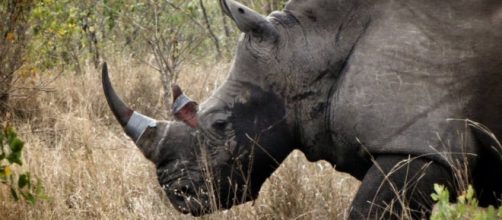Today’s issue of Nature magazine tells about a new effort using stem cells to bring back the almost extinct white rhino, (Ceratotherium simum cottoni),by changing skin cells into sperm and eggs. There are only three known such rhino in the wild and they are foundin Kenya,
Research led by top science teams.
The effort is being led by teams at the San Diego Zoo Global (U.S.) and the Leibniz Institute for Zoo and Wildlife Research in Germany. In the first step, southern white rhino (Ceratotherium simum simum) surrogate mothers are going to be implanted with embryos from existing eggs and sperm but that may not be enough to save or more properly recreate, the species.
Researchers, therefore, are looking to stem cell research to give them the option of creating new sperm and eggs in the future from saved white rhino skin cells.
Stem cell technology.
Unlike the northern white rhino variety, of which only two fertile females (Najin and Fatu) exist, there are more than 20,000 southern white rhinos alive today. If it proves possible to generate sperm and eggs using stem cells, this technique to could be applied to many other species of which skin samples still exist. George Church, at the Harvard Medical School plans to try the same method to recreate the woolly mammoth.
Financial concerns.
The main problem today seems to be more financial than scientific with the project likely to run into the tens of millions of dollars which is why some conservationists are opposed to the program.
Many of them feel that the money could best be spent elsewhere in existing and more proven conservation projects.
Ethics.
Some concern has been raised in other quarters as to the ethics and moral implications involved in the recreation of extinct species. For example, would it be unethical to resurrect the Neanderthal? And then there are those from the religious right who feel animals should be used and not catered to - nor should we mere humans attempt the act of creation.
Others in the field feel that any work which can rescue one species from extinction may provide valuable scientific evidence about ways humans and other animals can have new medical treatment options.

